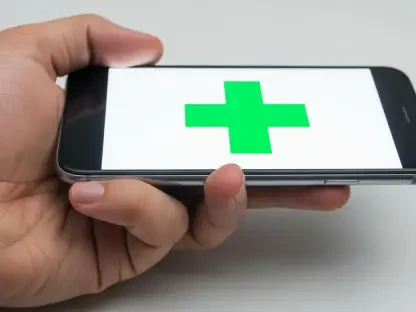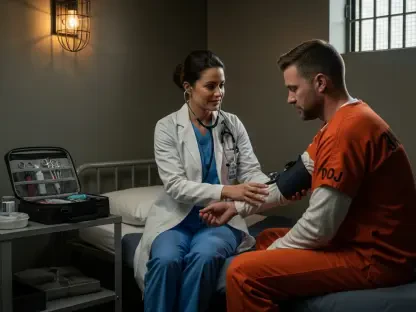Missouri is grappling with a severe shortage of behavioral health professionals, with only about 200 of the state’s 1,000 licensed psychiatrists residing in the state to serve roughly six million people. This shortage has led to overwhelming demand for psychiatric services, intensified by the COVID-19 pandemic. Cardinal Glennon Children’s Hospital, a key pediatric medical center in St. Louis, Missouri, has been acutely impacted by this crisis. The hospital’s emergency departments are often inundated with behavioral health patients awaiting proper care, sometimes held for weeks, turning the ED into a bottleneck rather than a place for acute care and trauma treatment.
The Problem
Behavioral Health Crisis in Missouri
Cardinal Glennon Children’s Hospital, which serves patients across Missouri, Illinois, Arkansas, and other neighboring regions, found itself particularly burdened by the statewide shortage of behavioral health professionals. The universal nature of behavioral health needs across different demographics and regions exacerbates the issue, making it challenging to meet the growing demand. Long waiting lists, extended appointment lead times, and an overwhelming influx of behavioral health patients seeking immediate care drove many families to enlist emergency department services as a last resort. This perpetuated a vicious cycle, where neither behavioral health patients nor acute care patients received the timely assistance they required, straining the hospital’s resources and its ability to provide effective care.
The pressing need for adequate behavioral health resources was heightened by the ramifications of the COVID-19 pandemic, which intensified the mental health crisis and further stretched the limited workforce. Cardinal Glennon’s emergency departments frequently turned into holding areas for patients in dire need of psychiatric evaluation and placement, transforming a space meant for critical and trauma care into a congested and inefficient bottleneck. This situation highlighted an urgent imperative to find innovative solutions that could effectively alleviate the hospital’s burden and ensure that patients could access necessary psychiatric services without prolonged delays and inadequate care.
Impact on Emergency Departments
One of the cardinal challenges faced by Cardinal Glennon Children’s Hospital was the overwhelming congestion in its emergency departments (ED), a space originally designed to deliver acute trauma treatment and critical care. The hospital frequently encountered situations where behavioral health patients, often in critical states, had to wait for weeks to receive a psychiatric evaluation and appropriate placement. This transformed the ED from a facility for immediate medical interventions to a waiting area for psychiatric services, drastically reducing its efficacy in catering to genuine trauma and acute illnesses.
The bottleneck created by the prolonged presence of behavioral health patients impeded the overall functionality of the emergency departments. These units struggled to serve both behavioral health and medically urgent cases effectively, exacerbating the dilemma for healthcare providers who had to balance immediate physical health emergencies with behavioral health crises. The overflow into EDs stemmed from an inability to match rapidly increasing demand with existing psychiatric resources, driving home the necessity for innovative, high-impact solutions that could provide swift and efficient psychiatric care without overwhelming the hospital’s key emergency services. This underscored the critical need for an alternative strategy to address the overlapping demands of behavioral and acute health care effectively within the resource-constrained backdrop of the ongoing mental health crisis.
The Proposal
Turning to Telepsychiatry
Amidst the mounting challenges, Cardinal Glennon Children’s Hospital recognized the necessity of adopting a novel approach to expand psychiatric services: telepsychiatry. Unlike other medical specialties that demand physical assessments and procedures, behavioral health primarily revolves around cognitive evaluations and verbal discussions, making it remarkably well-suited for virtual interventions. The idea was to leverage telemedicine to bridge the gap in psychiatric care by facilitating remote consultations, evaluations, and follow-up treatments. This approach not only promised to alleviate the burden on overextended emergency departments but also offered an opportunity to enhance access to quality psychiatric care efficiently.
The hospital embarked on a search for vendors capable of delivering dedicated psychiatric support, specifically tailored to the pediatric context. The goal was to find a partner that could seamlessly integrate within the existing hospital infrastructure while providing comprehensive psychiatric services. This venture was not merely about adopting a technological solution but about forming a partnership that could grow alongside the hospital. The intent was to harness telepsychiatry to create a scalable, sustainable model capable of meeting the dynamic behavioral health demands of a diverse pediatric patient population across multiple states.
Choosing the Right Partner
After careful evaluation of potential partners, Cardinal Glennon Children’s Hospital selected Iris Telehealth, a vendor renowned for its commitment to building growth-oriented partnerships and proven expertise in the field. Iris Telehealth’s approach was more than a transactional arrangement; it was about forming a relationship that prioritized continuous improvement and adaptability to the hospital’s evolving needs. The initial proposal involved one full-time dedicated psychiatrist who would focus solely on Cardinal Glennon’s patients. This arrangement allowed the hospital to incrementally implement telepsychiatry, making necessary adjustments to workflows and processes as they grew more accustomed to the technology and its benefits.
This phased introduction provided the flexibility to refine operations and ensure that telepsychiatrists could effectively serve patients from Missouri, Illinois, Arkansas, and neighboring states. The goal was to streamline processes, reduce patient wait times, and optimize the hospital’s ability to deliver timely and efficient psychiatric care. The decision to scale services as needed was crucial in building a robust, adaptable system that could respond to increasing demands without overwhelming the hospital’s existing infrastructure. This strategic collaboration laid the groundwork for a holistic integration of telepsychiatry into the hospital’s service model, poised to address the complex and immediate behavioral health needs of its pediatric patients.
Implementation
Integrating Telepsychiatry with Existing Systems
Integrating telepsychiatry with existing systems can significantly enhance accessibility and efficiency in mental health care. This approach enables patients to receive timely psychiatric consultations remotely, reducing the need for physical visits and potentially lowering healthcare costs. In addition, telepsychiatry can help bridge the gap in mental health services, especially in underserved or rural areas where access to psychiatric care is often limited.
Central to the successful implementation of telepsychiatry at Cardinal Glennon Children’s Hospital was leveraging the existing Epic EHR platform, a centralized system already in place for managing comprehensive patient care. This strategic move ensured that the transition to virtual care was seamless, maintaining continuity and minimizing disruption. Telepsychiatrists joined the care process via Epic’s integrated video platform, allowing real-time interactions with patients. This setup not only upheld the robust standards of care but also facilitated an easy transition between in-person and virtual visits. The core objective was to maintain a smooth, integrated experience for both healthcare providers and patients.
Pre-visit preparations played a pivotal role in the telepsychiatry model. The hospital’s team diligently handled registration, insurance authorizations, and readiness assessments before every virtual consultation. This meticulous groundwork ensured that patients were well-prepared and committed to their appointments, thereby enhancing the overall efficiency and effectiveness of the sessions. By automating and streamlining these preparatory steps, Cardinal Glennon’s team could focus more on delivering optimal patient care rather than dealing with administrative hurdles. This approach fundamentally strengthened the patient engagement process, promoting adherence to treatment plans and reducing the likelihood of missed appointments.
Comprehensive Care Team
Successful integration of telepsychiatry necessitated building a robust support system around it. At Cardinal Glennon Children’s Hospital, this came to life through the establishment of a comprehensive care team designed to provide holistic support, extending beyond the telepsychiatrist’s initial evaluations. Patients’ treatment plans were augmented by the diligent efforts of psychologists, counselors, clinical social workers, and nurse navigators who offered ongoing support. Following a psychiatrist’s directive, these professionals ensured that each patient received continuous, well-rounded care, contributing to their overall mental health journey.
Essential to the success of telepsychiatry was treating remote psychiatrists as integral parts of the hospital’s team. Integrating them seamlessly into existing workflows was not only about technological integration but also about aligning them with the hospital’s culture and operational dynamics. The telepsychiatrists were extended the same sense of belonging and teamwork as their in-person counterparts, fostering an environment where virtual care was viewed as an extension of the hospital’s services rather than an isolated component. This emphasis on cultural integration reinforced a coordinated approach to patient care, enhancing both the efficacy and acceptance of telepsychiatry among the hospital staff and patients.
Results
Increased Access to Care
Governments and healthcare organizations have been actively working to improve access to care for underserved populations. By expanding telehealth services, increasing funding for community clinics, and implementing policy changes, they aim to address disparities in healthcare availability and quality. These efforts are critical in ensuring that all individuals, regardless of their location or socioeconomic status, can receive the medical attention they need.
The adoption of telepsychiatry at Cardinal Glennon Children’s Hospital yielded notable improvements in psychiatric care delivery, marked by significant metric enhancements. The hospital experienced a tripling in its psychiatric activity volume, effectively broadening access to mental health services for its patient population. More children were able to receive timely psychiatric interventions, evidenced by the increase in the number of new patients scheduled within 14 days. The percentage surged from a minimal 14% to an impressive 60%, underscoring the efficiency gains facilitated by telepsychiatry. By drastically reducing waiting periods for psychiatric appointments, the hospital managed to provide prompt care, preventing the escalation of behavioral health issues into crises.
This substantial improvement in access was not merely a reflection of quantitative gains but also qualitative enhancements in patient care. The dedicated efforts to engage patients and prepare them for their remote visits played a critical role in this success. The reduced lead times for appointments translated into timely interventions, which are crucial in pediatric mental health. Early treatment can significantly impact long-term outcomes, and by scaling telepsychiatry, Cardinal Glennon ensured these timely interventions became a cornerstone of their patient care strategy. Such improvements clearly demonstrated the potential of telemedicine to bridge gaps in psychiatric services, especially in regions grappling with shortages.
Reduced No-Show Rates
One of the notable benefits of telepsychiatry implementation was the significant reduction in no-show rates and same-day cancellations. By focusing on patient engagement and thorough pre-visit preparations, the hospital reduced the no-show rate from 21% to just 7%. This improvement ensured more children received the care they needed without unnecessary delays, optimizing the use of available psychiatric resources. The preparative measures taken before each session, such as registration and readiness assessments, assured that families were committed to the scheduled appointments, thereby reducing last-minute cancellations.
A decrease in no-show rates not only reflects better patient commitment but also enhances the efficiency and productivity of healthcare providers. Psychiatric services, being inherently delicate and crucial, benefit immensely from consistent patient attendance. Ensuring that appointments are honored allows psychiatrists to manage their schedules more effectively, reducing downtime and increasing the number of patients they can assist. This efficiency feeds back into the overall healthcare system, ensuring that resources are utilized optimally. Cardinal Glennon’s success in this regard highlighted the importance of patient engagement strategies in telemedicine, demonstrating that virtual care could achieve parity, if not superiority, in terms of patient adherence compared to traditional in-person visits.
Alleviating Emergency Department Burden
A transformative outcome of integrating telepsychiatry was the significant alleviation of pressure on the emergency departments (ED) at Cardinal Glennon Children’s Hospital. The average hold time for behavioral health patients awaiting psychiatric evaluation and placement was halved, making room for more acute care and trauma cases in the ED. This reduction is critical, as timely intervention in behavioral health crises can prevent escalation and save lives. By offering virtual psychiatric services, the hospital could effectively triage and manage behavioral health patients outside the emergency setting, redirecting them to appropriate outpatient services.
Patients benefiting from timely outpatient interventions before their conditions escalated to emergency status significantly eased the ED’s burden. This preemptive care approach ensured that fewer patients required emergency psychiatric evaluations, thereby reducing the previously overwhelming demand on emergency services. Additionally, this meant that the medical team could redirect focus and resources to truly urgent trauma cases, improving overall healthcare delivery within the hospital. The successful integration of telepsychiatry thus resulted in a more streamlined and efficient emergency department, better equipped to handle the full spectrum of acute medical conditions and emergencies without the constricting pressure of prolonged behavioral health holds.
Overarching Trends
The Role of Telemedicine in Addressing Healthcare Shortages
The strategic deployment of telemedicine has highlighted an effective method to counteract healthcare shortages, particularly in the behavioral health domain where the absence of physical examination requirements lends itself well to virtual interventions. Cardinal Glennon Children’s Hospital’s experience underscores how telemedicine can extend the reach of psychiatric services, addressing geographical and resource-based limitations that hinder traditional care delivery. By integrating telepsychiatry into their service model, the hospital was able to harness virtual care to streamline processes, reduce patient wait times, and provide consistent mental health support.
This trend is representative of a broader movement within the healthcare sector, where telemedicine is increasingly recognized as a viable and even preferable alternative in certain contexts. The shift towards virtual care is driven by its inherent flexibility and capability to transcend the physical barriers that typically limit access to specialized care. Through telemedicine, healthcare providers can offer timely interventions, maintain continuity of care, and manage a higher volume of patients more efficiently. Such transformative potential is particularly pertinent in addressing the systemic shortages in behavioral health professionals, showcasing telemedicine as a crucial tool in modernizing and optimizing healthcare delivery.
Comprehensive Approach to Telemedicine
The success of the telepsychiatry initiative at Cardinal Glennon Children’s Hospital illustrates the need for a comprehensive approach that combines advanced technology with robust support services. Ensuring patient and provider engagement is paramount, and this can only be achieved by creating a holistic care environment that integrates virtual and in-person services seamlessly. At Cardinal Glennon, the deployment of telepsychiatry was complemented by a robust support framework involving coordinators, social workers, psychologists, and other essential personnel. These human elements are integral to the effective operation of a telemedicine program, ensuring that the technological advancements are fully leveraged to enhance patient care.
This comprehensive approach also emphasizes the critical role of cultural and operational integration. For telemedicine to work effectively, it must not be seen as an isolated service but as an integral part of the hospital’s overall care strategy. Embedding telepsychiatrists within the existing workflows and hospital culture creates a cohesive care team environment, fostering a sense of unity and shared purpose. This method of integration ensures that virtual care is as accessible and reliable as traditional in-person care, overcoming potential resistance and ensuring widespread acceptance and utilization among patients and healthcare providers alike.
Consensus Viewpoints
Telemedicine as a Solution
The consensus within the healthcare community, as demonstrated by the telepsychiatry initiative at Cardinal Glennon Children’s Hospital, is that telemedicine can substantially mitigate psychiatric care shortages when implemented with careful planning and integration. The key to successful telemedicine adoption is not merely the technological aspect but its seamless incorporation into existing medical workflows. Ensuring that robust support systems are in place, which cater to both patients and providers, is fundamental to the program’s success. Telemedicine, therefore, presents a scalable, adaptable solution to address the pressing demands of psychiatric care, particularly in underserved regions.
Building a telemedicine program that supports providers throughout their care journey ensures that patients receive continuous and effective interventions. This model’s success lies in its ability to provide immediate access to psychiatric services, reducing the strain on emergency departments and improving patient outcomes. The thoughtful implementation of telemedicine fosters an environment where virtual care becomes an extension of traditional healthcare services. This seamless integration embodies the future of healthcare delivery, addressing critical shortages while maintaining high standards of patient care.
Importance of Human Elements
Cardinal Glennon’s telepsychiatry program underscored the critical importance of incorporating human elements within the telemedicine framework. While technology facilitates access and streamlines processes, the engagement and support from a comprehensive care team are indispensable. Coordinators, social workers, psychologists, and other support staff play pivotal roles in ensuring that patients receive holistic, continuous care. Their contributions extend beyond the virtual consultations, providing the necessary support that enhances patient adherence to treatment plans and promotes long-term mental health outcomes.
The integration of telepsychiatrists into the hospital’s workflows and cultural milieu demonstrates the importance of treating virtual care providers as extensions of the in-person care team. This approach fosters collaboration, ensures consistency in care delivery, and enhances the overall efficacy of the telemedicine program. By emphasizing the human elements of care, Cardinal Glennon created a model where technology and compassion coalesce to provide comprehensive, effective behavioral health services. This dual focus on technology and human support is crucial for the successful deployment and operation of telemedicine programs, ensuring that patients receive the quality care they deserve.
Conclusion
Missouri is grappling with a critical shortage of behavioral health professionals. The state has only about 200 of its 1,000 licensed psychiatrists available to serve nearly six million residents, which has led to significant demand for psychiatric services. This issue has been exacerbated by the COVID-19 pandemic, highlighting deficiencies in mental health care. Cardinal Glennon Children’s Hospital, an essential pediatric medical center in St. Louis, has felt the impact of this crisis acutely. The hospital’s emergency departments frequently find themselves overwhelmed with behavioral health patients who require proper care, often waiting for weeks at a time. This situation has turned the ED into a bottleneck, preventing it from efficiently handling acute care and trauma treatment. This dilemma underscores the urgent need to bolster Missouri’s mental health workforce to ensure timely and effective care for those in need, making it imperative for state and local officials to take immediate and decisive measures.









